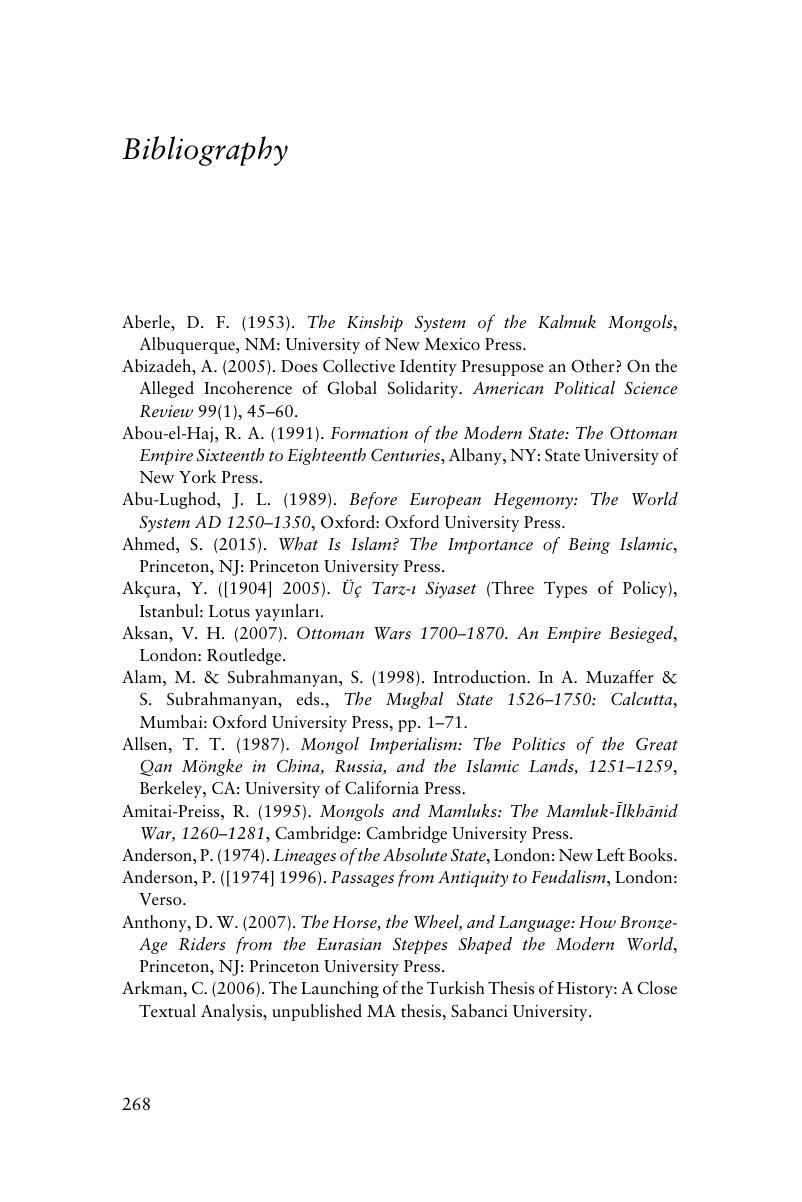 The Steppe Tradition in International Relations
The Steppe Tradition in International Relations Book contents
- The Steppe Tradition in International Relations
- The Steppe Tradition in International Relations
- Copyright page
- Dedication
- Contents
- Figures
- Tables
- Maps
- Preface
- Book part
- Introduction
- 1 The Steppe As the Great Unknown
- 2 Emergence of the Steppe Tradition
- 3 The Steppe Tradition Settles Down
- 4 The Steppe in the Emergent Rus’ Polity
- 5 Russia and Turkey between the Steppe and Europe
- Conclusion
- Bibliography
- Index
- References
Bibliography
Published online by Cambridge University Press: 26 June 2018
- The Steppe Tradition in International Relations
- The Steppe Tradition in International Relations
- Copyright page
- Dedication
- Contents
- Figures
- Tables
- Maps
- Preface
- Book part
- Introduction
- 1 The Steppe As the Great Unknown
- 2 Emergence of the Steppe Tradition
- 3 The Steppe Tradition Settles Down
- 4 The Steppe in the Emergent Rus’ Polity
- 5 Russia and Turkey between the Steppe and Europe
- Conclusion
- Bibliography
- Index
- References
Summary

- Type
- Chapter
- Information
- The Steppe Tradition in International RelationsRussians, Turks and European State Building 4000 BCE–2017 CE, pp. 268 - 297Publisher: Cambridge University PressPrint publication year: 2018


